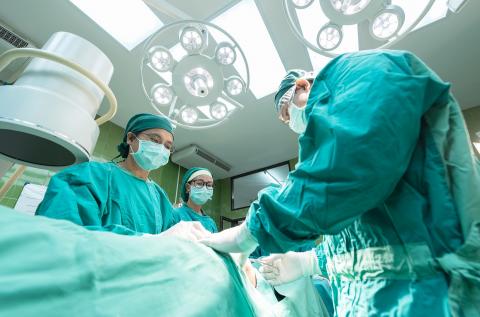
NODS-CoV-2: Simulating risks of hospital-acquired infections via SARS-CoV-2
The SARS-CoV-2 virus, responsible for Covid-19, can be transmitted in hospitals. Understanding how and tracking risks caused by movement in hospitals is vital to ensure preventative measures can be applied. That is the objective of the project entitled NODS-CoV-2 (Nosocomial Dissemination risk of SARS-CoV-2), led by Didier Guillemot from the Anti-infective evasion and pharmacoepidemiology (Université Paris-Saclay, UVSQ, Inserm) and Epidemiology and Modelling of Antimicrobial resistance (Institut Pasteur) research group. The project received funding from the ANR Flash Covid-19 call for projects in early April.
It is now a well-known fact. Limiting contact is essential to reduce the propagation of Covid-19. How can this be made possible in hospitals where caregivers interact with each other and patients regularly? Didier Guillemot and his team, generally concerned with antibiotic-resistant bacteria and the consequences for public health, are going to measure contact to estimate the risk of the virus spreading in hospitals. A team including medicine and midwife students will visit a selection of hospitals in France to provide caregivers and patients with sensors to detect their contacts for 48 hours. "The sensors, designed with INRIA, will be deployed in different units including resuscitation, medicine and neonatology. They will measure and characterize the dynamic contact structures in each department," explains Didier Guillemot.
Multidisciplinary participation is essential for the project
This phase of the investigation is based on the MOD-Cov simulation program, led by Lulla Opatowski from the same research group. The data collected from the simulations will be used to estimate the risk of spreading SARS-CoV-2 in hospitals and predict its propagation in different scenarios. The information will be used to review hospital organisation and caregiver flows in units when lockdown restrictions are eased. The team benefited from support from AP-HP Paris Saclay clinical research unit and the AP-HP clinical research and innovation department (DRCI). "Thanks to their help with drafting protocols, applying regulations, and connecting with the committee for people’s protection (CPP) and the CNIL, we received authorisation within a few days," says Didier Guillemot.
Previously used methodology
The team applied this contact tracking system using sensors on caregivers and patients 10 years ago in an AP-HP hospital. “We made significant progress in understanding the risks associated with spreading resistant bacteria in hospitals. For example, we observed that not all multi-drug-resistant bacteria have the same spreading capacity.” Technology using simulations also contributed to propagation predictions. The same type of simulator is now ready to be used to analyse the data collected from this study.
The first results are expected in a few weeks. "Priority will be given to rapidly distributing information useful for managing the epidemic in hospitals," says Didier Guillemot.
This project is carried out in partnership with the civil hospices of Lyon, the university hospitals of Bordeaux, the public assistance - Paris hospitals (AP-HP), Inserm, UVSQ, Université Paris-Saclay, Institut Pasteur, Université de Bordeaux, Université de Lyon/CIRI, Inria.
